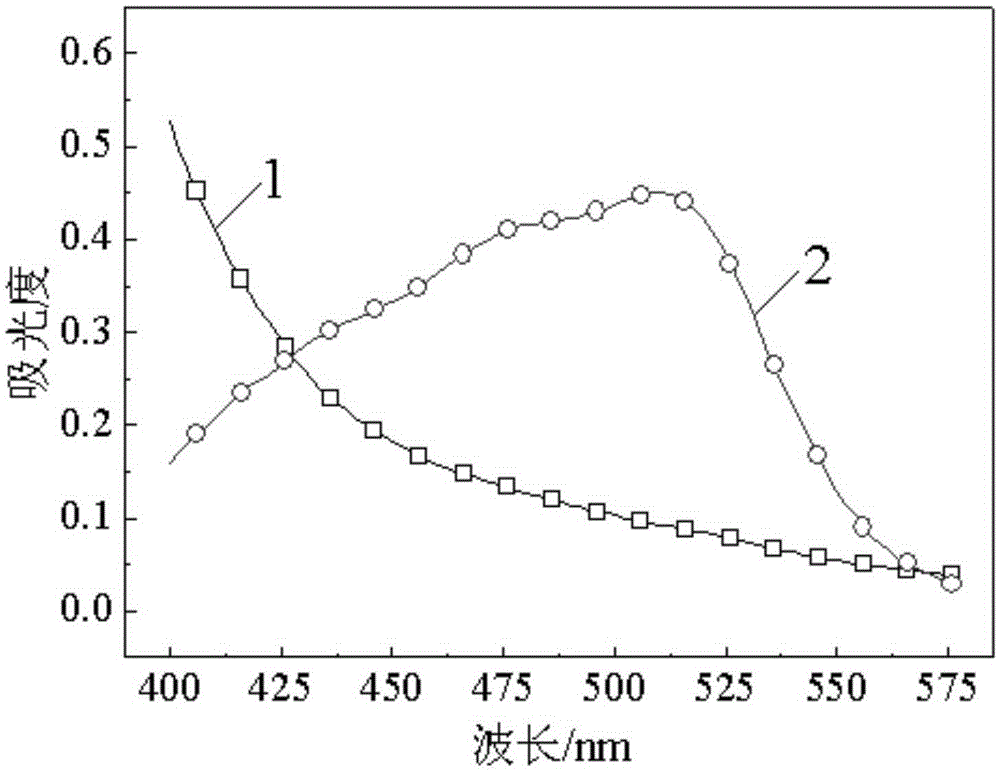Method for quantitatively detecting concentration of hydroxyl free radical in Fenton partition system
A technology for quantitative detection and free radicals, which is applied in the measurement of color/spectral characteristics, and analysis by making materials undergo chemical reactions, can solve the problems of quantitative detection of hydroxyl radical concentration interference, inaccurate detection results, etc., and achieve accurate quantification The effect of detection, low price and simple operation
- Summary
- Abstract
- Description
- Claims
- Application Information
AI Technical Summary
Problems solved by technology
Method used
Image
Examples
specific Embodiment approach 1
[0050] Specific embodiment one: the present embodiment is a kind of method that quantitatively detects the concentration of hydroxyl radicals in the Fenton decomposition system and is completed according to the following steps:
[0051] 1. ①. Set the concentration of 100mL to 30mmol L -1 H 2 o 2 The solution is heated to 20°C-90°C, and then the reaction temperature is 20°C-90°C and the stirring speed is 300r·min -1 ~600r·min -1 FeSO 4 , to obtain a mixed solution A;
[0052] FeSO in the mixed solution A described in step 1. 4 The concentration is 5mmol·L -1 ;
[0053] ②. Put the mixed solution A at a reaction temperature of 20°C to 90°C and a stirring speed of 300r·min -1 ~600r·min -1 Under reaction, when mixing solution A in H 2 o 2 When the concentration is lower than the critical concentration, add DMSO to mixed solution A to obtain mixed solution B; add distilled water to mixed solution B to make the volume of mixed solution B 60mL;
[0054] The concentration o...
specific Embodiment approach 2
[0076] Specific embodiment two: the difference between this embodiment and specific embodiment one is: the critical concentration described in step one ② is 500 μmol L -1 . Other steps are the same as in the first embodiment.
specific Embodiment approach 3
[0077] Specific embodiment three: the difference between this embodiment and specific embodiment one or two is: in step 1., the concentration of 100mL is 30mmol L -1 H 2 o 2 The solution was heated to 60°C, and then the reaction temperature was 60°C and the stirring speed was 500r·min -1 FeSO 4 , to obtain mixed solution A. Other steps are the same as those in Embodiment 1 or 2.
PUM
 Login to View More
Login to View More Abstract
Description
Claims
Application Information
 Login to View More
Login to View More - R&D
- Intellectual Property
- Life Sciences
- Materials
- Tech Scout
- Unparalleled Data Quality
- Higher Quality Content
- 60% Fewer Hallucinations
Browse by: Latest US Patents, China's latest patents, Technical Efficacy Thesaurus, Application Domain, Technology Topic, Popular Technical Reports.
© 2025 PatSnap. All rights reserved.Legal|Privacy policy|Modern Slavery Act Transparency Statement|Sitemap|About US| Contact US: help@patsnap.com


